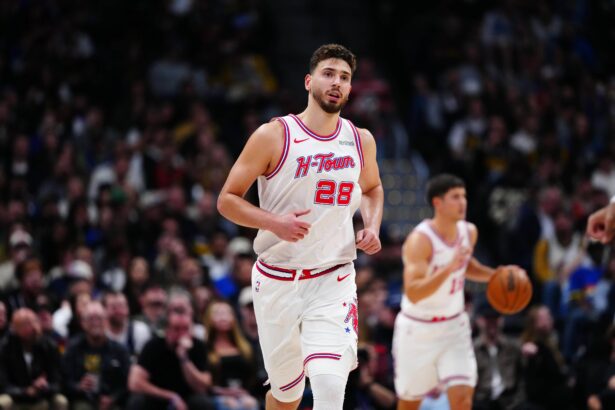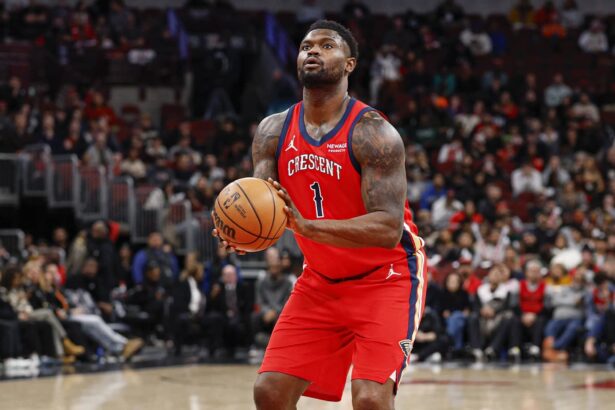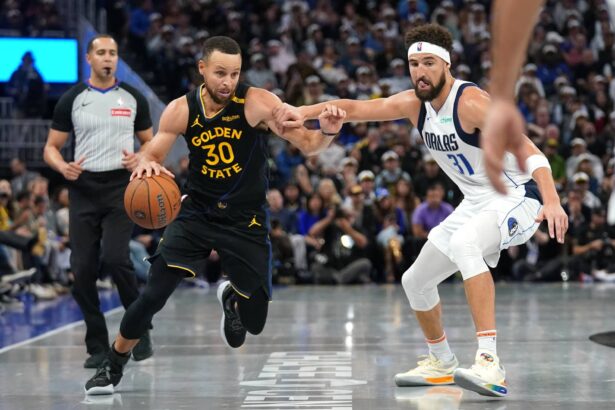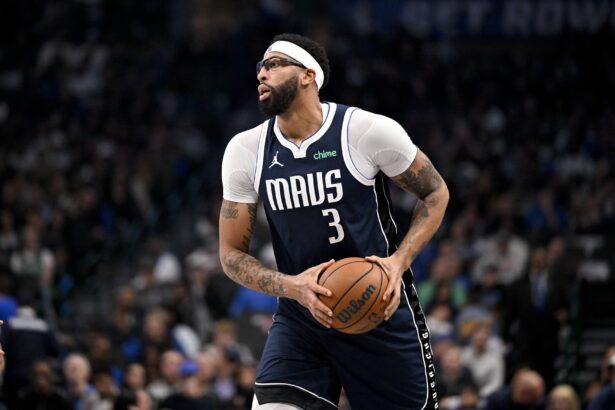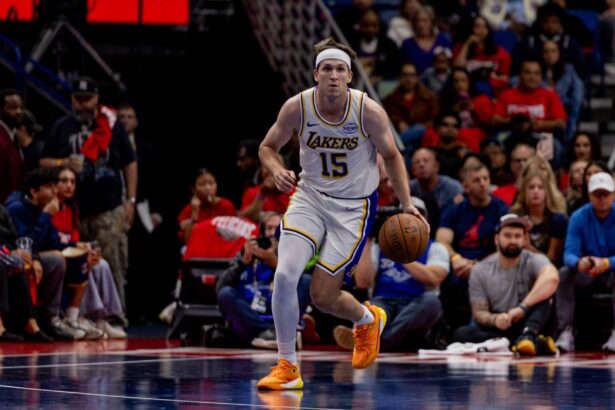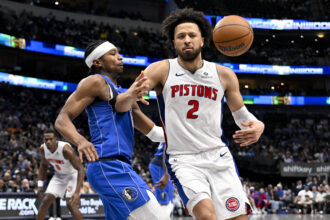- Tim Duncan won five titles and is considered the greatest power forward of all time
- No player in history had the post-moves that Hakeem Olajuwon had
- It is time to settle the debate about which superstar was the better player
When discussing the basketball prowess of two legendary big men, Tim Duncan and Hakeem Olajuwon, it becomes evident that pure skills take center stage in the comparison. Both Duncan and Olajuwon are renowned for their exceptional abilities on the basketball court, transcending the conventional metrics of championships and statistics. In this comparison, we delve into the intricacies of their game, analyzing their skills on offense and defense.
Beyond their accolades and championships, this examination seeks to celebrate the innate talents, versatility, and finesse that set Tim Duncan and Hakeem Olajuwon apart in the realm of basketball excellence. Duncan, with his fundamentally sound post moves, impeccable footwork, and exceptional basketball IQ, personified the power forward and center positions. On the other hand, Hakeem Olajuwon dazzled with his “Dream Shake” and unparalleled shot-blocking abilities, revolutionizing the center position.
Without further ado, it is time to ignore resumes and purely compare the skills of both Duncan and Olajuwon on both ends of the court. It might surprise some people how this comparison turns out.
Scoring – Hakeem Olajuwon
Tim Duncan, often referred to as the “Big Fundamental,” was renowned for his exceptional scoring efficiency and versatility. His mid-range bank shot was a signature move that made him a threat from the post and the high post. Duncan’s footwork and understanding of spacing were second to none, allowing him to maneuver around defenders with grace. Over his career, Duncan averaged 19.0 points per game on 50.6% from the field and 69.6% from the free-throw line. His best seasons offensively came in 2002 and 2003 when he posted 25.5 points and 23.3 points per game respectively.
Conversely, Hakeem Olajuwon possessed an array of offensive moves that were as diverse as they were devastating. His “Dream Shake,” a mesmerizing combination of fakes and spins in the post, remains one of the most iconic scoring moves in basketball history. Olajuwon’s footwork in the low post was unparalleled, allowing him to score over defenders with finesse hooks, fadeaways, and turnaround jumpers. What set Olajuwon apart was his agility and ball-handling skills for a player of his size, which enabled him to face up and take defenders off the dribble.
The Nigerian star averaged a career 21.8 points per game on 51.2% from the field and 71.2% from the free-throw line. The center averaged at least 26 points per game four times, including the 1995 season when he posted 27.8 points per game. That means Hakeem is a better scorer than Duncan and that is not up for debate.
Shooting – Hakeem Olajuwon
Tim Duncan, throughout his career, was known for his impeccable mid-range jump shot and bank shot. He possessed a soft shooting touch, particularly from the high post and mid-range areas. Duncan’s bank shot, in particular, was a signature move that became synonymous with his game. His ability to use the glass effectively and accurately to release the ball from different angles made him a reliable scorer in situations where other players might struggle. Duncan averaged 50.6% from the field, 50.9% on 2-point field goals, and 69.6% from the stripe.
While Duncan’s range extended out to mid-range, he wasn’t known for three-point shooting, as it wasn’t a significant part of his game as he only posted 17.9% from three on 0.1 attempts per game. Nevertheless, his proficiency in the mid-range made him a difficult matchup, as he could stretch the floor while remaining a threat to drive or pass when defenders closed out on him.
Hakeem Olajuwon, on the other hand, was not primarily a jump shooter, but his scoring ability extended beyond the traditional big man’s repertoire. Olajuwon’s primary scoring weapon was his array of post moves, including the famous Dream Shake. These low-post moves allowed him to score efficiently near the basket, using a combination of fakes, spins, and quick footwork. While he didn’t rely heavily on jump shooting, he did possess a turnaround jumper and a face-up game, which he used effectively to keep defenders guessing.
Hakeem averaged 51.2% from the field and 71.2% from the free-throw line while only going 20.2% from three on 0.1 attempts per game. The Nigerian star not only shot better percentages than the Spurs legend from the field but also had a slightly more consistent mid-range jumper so he earns a slight advantage.
Athleticism – Hakeem Olajuwon
Tim Duncan was known for his understated athleticism. His game was built on sound fundamentals, basketball IQ, and exceptional footwork rather than raw athleticism. While not known for high-flying dunks or highlight-reel plays, he had a strong and consistent vertical leap that he utilized for shot-blocking and finishing around the rim. At 6’11” and 250 lbs, Duncan was certainly a powerful figure in the post.
Hakeem Olajuwon, on the other hand, was renowned for his extraordinary athleticism, particularly considering his position as a center. Olajuwon’s footwork was legendary, allowing him to move swiftly and gracefully in the post, leaving defenders off balance. His quick first step and ability to face up against opponents made him a versatile offensive threat.
Defensively, Olajuwon’s athleticism was on full display through his shot-blocking prowess, as he could cover ground rapidly to contest and alter shots. The Houston Rockets legend stood 7’0” and weighed 255 lbs, so he was quicker, more explosive, and bigger than Duncan which means he was the better athlete.
Defense – Even
Duncan was a defensive anchor throughout his career. His ability to read the game and anticipate opponents’ moves was exceptional. Duncan was a master of positioning, always in the right place at the right time to contest shots, grab rebounds, and disrupt passing lanes. Duncan’s disciplined approach to defense was a cornerstone of the San Antonio Spurs’ success during his tenure, as he could guard both power forwards and centers with equal effectiveness. Over 19 years, Duncan made 15 All-Defensive Team selections and averaged a career 0.7 steals and 2.2 blocks per game.
Hakeem Olajuwon, often referred to as one of the greatest shot-blockers in NBA history, was a defensive force in the paint. His combination of size, agility, and shot-blocking instincts made him a dominant rim protector. Olajuwon made nine All-Defensive Team selections, won two Defensive Player of the Year awards, averaged 1.7 steals and 3.1 blocks per game, and is the all-time leader in career blocks.
In summary, while Tim Duncan and Hakeem Olajuwon had different defensive styles, they were both dominant defenders in their own right. Duncan relied on positioning, basketball IQ, and versatility to disrupt opponents, while Olajuwon used his shot-blocking prowess, quickness, and agility to protect the rim and create turnovers. As a result, this one is called even.
Handles – Hakeem Olajuwon
When it comes to analyzing the ball-handling skills of Tim Duncan and Hakeem Olajuwon, it’s important to acknowledge that they were big men whose primary responsibilities were not ball-handling. However, they did possess varying degrees of skill in this aspect of their game, which added another layer to their offensive repertoire.
Tim Duncan, for a player of his size and position, had above-average ball-handling abilities. While he wasn’t known for flashy dribble moves or bringing the ball up the court like a guard, his handle was reliable and effective within the context of his game. Duncan used his dribbling skills primarily in the post and mid-range areas, where he could back down defenders, face them up, and drive to the basket.
Hakeem Olajuwon, similar to Duncan, wasn’t known for flashy dribbling skills, but he displayed impressive ball-handling for a center. His quick first step and agility allowed him to face up against defenders, putting the ball on the floor to drive past them. Olajuwon’s Dream Shake move often involved a series of dribble moves combined with fakes, showcasing his coordination and ball-handling prowess.
Due to the iconic Dream Shake, Olajuwon had to use his handles more than Duncan and sometimes he would completely stun defenders. As a result, the Rockets star might have an advantage over the Spurs advantage.
Clutch – Even
Tim Duncan, often lauded for his unflappable demeanor on the court, possessed a remarkable ability to remain calm and composed in clutch situations. His clutch performances were characterized by his reliability in executing fundamental plays, whether it was hitting mid-range jumpers, converting crucial free throws, or making key defensive stops. Duncan’s basketball IQ and decision-making were invaluable during crunch time, and he managed to win five titles and three Finals MVPs with the Spurs.
Hakeem Olajuwon, too, had a reputation for coming through in clutch moments. His versatility as a scorer and shot-blocker made him a game-changer on both ends of the floor when it mattered most. Olajuwon’s playoff performances are particularly notable, as he led the Houston Rockets to back-to-back championships in 1994 and 1995, earning NBA Finals MVP honors both times.
In summary, both Tim Duncan and Hakeem Olajuwon were renowned for their clutch ability, though their styles and contributions in these moments were different. Duncan’s reliability and leadership, combined with his fundamental excellence, made him a clutch performer who thrived in critical situations and this category has to be called even.
Leadership – Tim Duncan
Tim Duncan, often described as a quiet and understated leader, exemplified leadership through consistency, professionalism, and a strong work ethic. His “lead by example” style was evident in his commitment to his craft, both on and off the court. He was renowned for his humility, never seeking the spotlight but always willing to put the team’s success ahead of personal accolades. This selflessness and willingness to sacrifice for the greater good fostered a culture of teamwork and unity within the San Antonio Spurs organization which is why they won five championships.
Hakeem Olajuwon, while not as reserved as Duncan, was a charismatic and vocal leader who led through his passion and intensity. He was known for setting high expectations and demanding excellence from himself and his teammates. Olajuwon’s vocal presence on the court was often heard encouraging and guiding his teammates, pushing them to elevate their games. His leadership was particularly evident during the Houston Rockets’ back-to-back championship runs in the mid-1990s, where he served as both a vocal leader and a mentor to younger players.
While this one is very close, Duncan’s leadership was the driving force behind San Antonio’s dynasty, and five titles weigh more than two regardless of the fact that The Big Fundamental played with better players.
Basketball IQ – Tim Duncan
Tim Duncan, often referred to as one of the most cerebral players in NBA history, had an exceptional basketball IQ. His ability to read the game, make sound decisions, and execute plays was unmatched. Duncan’s exceptional court vision allowed him to excel as a playmaker from the post, frequently finding open shooters on the perimeter when double-teamed as he averaged a career 3.0 assists per game.
Defensively, his IQ translated into being a formidable shot-blocker and positional defender, where he could anticipate opponents’ moves and disrupt plays. His leadership on the court, including his ability to communicate and organize his teammates, further showcased his high basketball IQ.
Hakeem Olajuwon possessed a unique basketball IQ, particularly on the defensive end. His shot-blocking prowess and ability to anticipate opponents’ shots were indicative of his defensive acumen. Olajuwon’s footwork and timing on both ends of the floor were masterful, allowing him to excel in the low post and read the game exceptionally well.
Even if Olajuwon averaged 2.5 assists per game, he was not on the level of Duncan when it came to passing out of the post, and due to his basketball IQ, Duncan played 19 seasons in the league and was an enforcer even if he was older.
Impact – Even
Tim Duncan’s impact on the court was characterized by his remarkable consistency and versatility. As a power forward and center, he could dominate both ends of the floor. Offensively, his scoring ability in the post and mid-range, combined with his proficiency as a passer, made him a focal point of the San Antonio Spurs’ offense for nearly two decades. His leadership, high basketball IQ, and unselfishness created a winning culture in San Antonio, leading the Spurs to five NBA championships.
Hakeem Olajuwon’s impact on the court was characterized by his sheer dominance in the post and as a rim protector. Offensively, his diverse scoring moves in the low post made him one of the most unstoppable scorers in NBA history. Defensively, Olajuwon’s shot-blocking ability was legendary, altering opponents’ shots and creating fast-break opportunities. His impact extended beyond statistics, as he often lifted his team when it mattered most, leading the Houston Rockets to back-to-back championships in the mid-1990s.
In summary, Tim Duncan and Hakeem Olajuwon had profound impacts on the court that extended beyond their individual statistics and accomplishments. Their contributions to their teams, both in terms of winning and the culture they fostered, left enduring legacies in the NBA and this category has to be even.
Efficiency – Tim Duncan
Tim Duncan was renowned for his exceptional efficiency on the court. His offensive game was built on fundamental skills, impeccable footwork, and a deep understanding of spacing and positioning. His signature bank shot from the post and mid-range jumpers were both highly efficient shots, and he rarely forced difficult attempts. This approach resulted in a career field goal percentage of 50.6%, an impressive mark for a player with such a diverse offensive repertoire.
Hakeem Olajuwon’s efficiency was notable in different ways. While he also boasted a high field goal percentage, 51.2% for his career, his offensive game was characterized by versatility and creativity. Olajuwon’s Dream Shake and a wide array of post moves were not only effective but also efficient, as he often created high-percentage scoring opportunities out of seemingly difficult situations. While Olajuwon has better shooting percentages, Duncan was the master of efficiency as a scorer, passer, and defender and that means this category has to be even as a whole.
1-On-1 Game – Hakeem Olajuwon
In one-on-one situations, Duncan was a master at using his size and skill to his advantage. He could back down defenders in the low post with precision, using a variety of moves and counters. Additionally, Duncan had a reliable mid-range jump shot that he could use to create separation from his defender. What truly set Duncan apart in one-on-one scenarios was his ability to read the defense, recognize double-teams, and make the right pass to open teammates when necessary.
Hakeem Olajuwon, known for his incredible footwork and scoring versatility, was a nightmare for defenders in one-on-one situations. His Dream Shake move was virtually impossible to defend. Olajuwon’s agility and quickness for a player of his size allowed him to create separation from defenders with ease.
Olajuwon’s ability to adapt to his defender’s positioning and react accordingly made him a versatile one-on-one scorer. Defensively, he was equally adept in one-on-one scenarios, using his shot-blocking skills and footwork to disrupt opponents’ attempts. Duncan was difficult to handle in the post, but Olajuwon is one of the best scorers in NBA history and he has to take the edge as a one-on-one player.
Final Result
Hakeem Olajuwon vs. Tim Duncan 5-3
When considering various aspects of their game, it becomes apparent that both players were exceptional and left an enduring legacy in the NBA. However, when evaluating the elements discussed in this comparison—scoring ability, shooting ability, athleticism, defense, handles, clutch ability, leadership, basketball IQ, and overall impact—it appears that Hakeem Olajuwon emerges with a 5-3 advantage.
Hakeem Olajuwon’s unparalleled scoring versatility, shot-blocking prowess, agility, and clutch performances were key factors in his favor. His ability to dominate in the post, his incredible Dream Shake, and his contributions on both ends of the court set him apart as one of the most complete centers in NBA history. He had the edge in scoring, shooting, athleticism, handles, and one-on-one ability.
Tim Duncan, while trailing slightly in this comparison, should not be underestimated. His fundamental excellence, efficiency, leadership, and consistency were instrumental in the San Antonio Spurs’ sustained success, which included five NBA championships during his career. His impact went beyond statistics, creating a culture of excellence that still resonates in the organization and he had the edges in leadership, basketball IQ, and efficiency.
Ultimately, the 5-3 result reflects the fact that both Hakeem Olajuwon and Tim Duncan were exceptional players who made their mark in different ways, but the Houston Rockets star might have been the better individual player who won two titles without having Gregg Popovich, Tony Parker, Manu Ginobili, and David Robinson.







